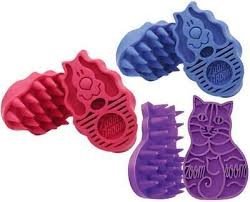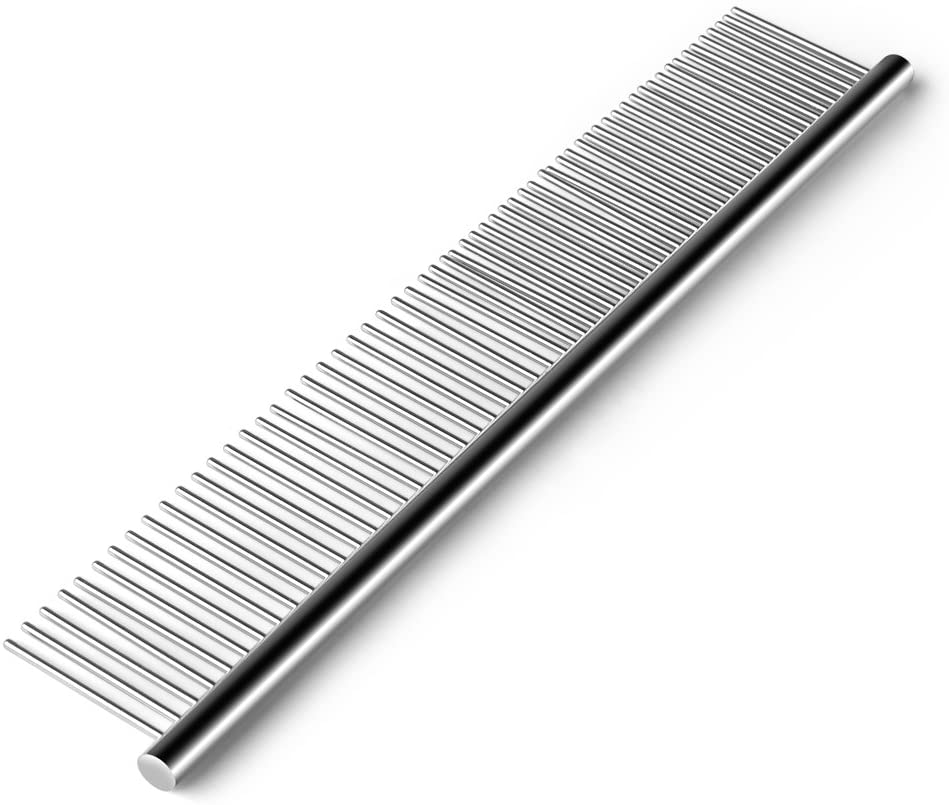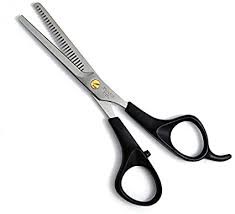by Jasmine Marie, Human-Animal Bond in Colorado Program Coordinator and Dog Trainer

Spring is in the air and that means spring cleaning…well, COVID-19 may be forcing us all to do a DEEP cleaning of our houses and yards by keeping us largely at home. But just as our homes need cleaning after a long winter, our dogs need grooming! For example, Spring is when dogs with double coats begin blowing their coats. What’s a “double coat,” you ask? What does “blowing their coat” mean?

We’ll explore the answers to these questions and more in this article. In addition to my work with HABIC, I’ve been a certified master groomer for nearly 20 years.
Due to the COVID-19 pandemic, pet grooming has been considered a “non-essential business.” However, many groomers across the nation disagree because of potential health issues that can arise if certain dogs are not regularly groomed.
I recently spoke with an employee at Colorado State University’s Veterinary Teaching Hospital about it. The number of dogs coming in with lacerations from at-home grooming with scissors has increased dramatically since the COVID-19 outbreak.
So here are some helpful things you can do at home until you feel comfortable taking your pet in for a “spa day:”

Use the proper tools for grooming
- Metal comb – great for all longer coats – dog or cat
- Slicker brush – great for tangles in rear-end areas – dog or cat
- ZoomGroom – great for topcoat/coarse hair shedding – dog or cat
- Undercoat rake – great for shedding double coated dogs
Work out matted hair and tangles gently
- Start by using a wide-tooth comb or a slicker brush to work the matted hair(s) out.
- IF you need to cut matted hair out (not recommended for cats):
- Use thinning shears (preferred method).
- With scissors as a last resort, pinch the matted hair as close as possible to your dog’s skin, working as a buffer to prevent cutting their skin.
Bathe your pet safely
- Make sure you have safely removed all matted hairs and major tangles BEFORE bathing.
- Matted hairs are like leather; they will tighten after getting wet.
- If bathing often, make sure to use dog-friendly shampoo.
- Dog skin pH is different from humans; our shampoo can severely dry out their skin.
- If bathing your cat, you must make sure your shampoo says it is safe for cats!

But back to the original questions about double coats! Dogs with a double coat have two layers; a dense undercoat with short hairs and a topcoat with longer coarse hair called guard hairs. Breeds such as Huskies, Golden Retrievers, and Australian Shepherds have a double coat.
Twice a year, double-coated dogs will “blow their coat.” In the spring, they “blow” (shed) their thick winter coat in preparation for their summer coat. In the fall, the same will happen and they will “blow” (shed) their summer coat and grow back their thick winter coat. Even Labrador Retrievers and some French Bulldogs have a double coat!

One of the biggest mistakes people make is to shave double coated dogs for the summer, thinking it will keep them cooler. This is one of the worst things you can do! Double coats act as insulation to protect our dogs from the heat. It is a part our dog’s natural cooling system. It protects skin from bugs and sunburn. Not to mention, if you shave a double coated dog, it may ruin their coat. It may NEVER grow back the same!
As I stated before, I’ve been grooming for quite some time. I have worked in a couple different salons over the past 20 years and I still currently groom dogs out of my home. So, if you have any questions about grooming your pets, I would be more than happy to talk with you! I absolutely love talking about and teaching grooming techniques, so please feel free to email me at jasmine.marie@colostate.edu.
About Human-Animal Bond in Colorado
 Founded in 1993, Human-Animal Bond in Colorado (HABIC) is a center in the School of Social Work, part of CSU’s College of Health and Human Sciences. HABIC’S mission is to improve the quality of life for people of all ages through the therapeutic use of companion animals, with particular focus in the areas of community outreach, teaching, and research.
Founded in 1993, Human-Animal Bond in Colorado (HABIC) is a center in the School of Social Work, part of CSU’s College of Health and Human Sciences. HABIC’S mission is to improve the quality of life for people of all ages through the therapeutic use of companion animals, with particular focus in the areas of community outreach, teaching, and research.